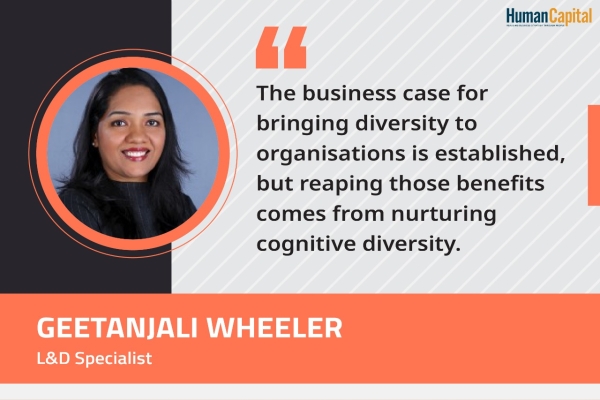Personal Mastery, Mental Models, Shared Vision (of teams), Team Learning and Systems thinking are the pillars of building a firm where employees think critically and challenge the status quo.
At 87, the legendary Michelangelo wrote, “Ancora Imparo”, meaning “I am still learning” alongside his painting. Organisations today would benefit if they inscribed these words in their boardrooms and hallways. And you will be not in a minority if you assume that these are paeans from an enthusiastic organisation learning evangelist!
Work today, learn tomorrow!
Indeed, most organisations believe that relentless execution, where employees work efficiently are sure shot pathways to great financial success and customer delight. However, such a belief is unfortunately not true. Even the best execution cannot guarantee enduring success in the digital knowledge economy. When organisations are too busy ‘doing’- they fail to pause, experiment, learn and unlearn. Kodak, a company that once dominated the photographic film market, blew its chance to lead the digital photography revolution. Steve Sasson, the Kodak engineer, who invented the first digital camera back in 1975, went on to say that when he first presented it, the management’s reaction was, ‘that’s cute—but don’t tell anyone about it!”
What are learning organisations?
Peter Senge, Faculty at MIT Sloane School of Management and the author of ‘The Fifth Discipline’, first mentioned about learning organisations during the 1990s. He identified five interrelated disciplines. According to him, Personal Mastery, Mental Models, Shared Vision (of teams), Team Learning and Systems thinking are the pillars of building a firm where employees think critically and challenge the status quo. A good example for a learning organisation is Southwest Airlines, built on innovative concepts for its industry like point-to-point travel, no assigned seats, rapid loyalty rewards, continues to thrive through constant innovation and an unflappable commitment to customer service. And Disney, with its solid core values viz. innovation, quality, community, storytelling, optimism, and decency, continues to invent newer forms of entertainment.
Wow! Let’s do it, then!
The nagging question is that if a learning organisation is synonymous with a successful organisation, why are all the organisations not doing it? It is difficult. There are three primary reasons for this. First, because most organisations just profess that learning is important, but when the ‘rubber hits the ground’, (read sending employees for training programmes)- you find business priorities taking over. In one’s experience, the drop rates for in house training programmes is as high as 50%, and the situation gets worse with a senior profile.
Secondly, most organisations fail to create the all-important ‘what’s-in-it-for me’, for learners. The CEO and senior executives get it, but people down the line have no idea how a training programme will help them. Finally,
The biggest hurdle is the ‘touch and go’ nature of most learning interventions. Organisations consider learning to be a one-time event; done with much grandeur, but those that do soon get lost in the sands of time.
Creating a learning organisation
Watkins and Marsick (1993, 1996) provide an integrative model of a learning organisation. Their proposed learning organisation model integrates two main organisational constituents: people and structure. They also went on to create the Dimensions of the Learning Organisation Questionnaire (DLOQ), designed to measure learning culture in organisation (1997). According to Watkins and Marsick, there are three levels of organisational learning.
◆ Individual level: Composed of continuous learning and inquiry.
◆ Team or group level: Reflected by team learning and collaboration.
◆Organisational level: Contains four dimensions of organisational learning - embedded systems, system connections, empowerment, and provide leadership for learning.
Getting the research to work
In my view, learning culture is built on four foundational principles
Principle 1: Build self-efficacy: The seeds of learning culture first need to be embedded at the individual level. Here, individuals need to be convinced that once the learning happens, they have the power to change things. There must be a definite and visible gap that they can see, which they believe the learning can help close. This can be termed as - the belief of change. If individuals are convinced that they can become better influencers at the end of the ‘Influencing Skills programme’- they are more likely to attend it. And that is where the first seeds of a learning culture are planted- in the individuals.
Principle 2: Make others care about it: Most learning is difficult. It means investing in time away from work or life. And it becomes important to create the learning organisation culture we need to build a system where learning matters. If individuals can share, talk, evangelise, even ‘show off’ their learning- then they are more encouraged to learn - an important link that most learning strategists fail to recognise. If learning remains a personal endeavour, it can never become part of the culture that encourages learning.
Principle 3: Create the systems & tools: Gone are the days when creating the learning calendar, finding the best faculty, and creating the best learning experience were important for building a good learning culture. Today, what you do after the training, that truly matters. The systems and the processes that will sustain the learning is far more important than the learning itself. Are there people in the system who can become the ‘go-to-resources’? Are there learning aids? Learning repositories that one can access, when one is struggling with that learning attribute? A strong learning management system is a key enabler to sustain the learning culture.
Principle 4: Bring in the leaders: Like in all aspects of organisational behaviour, the role of the leader hugely influences the learning culture. When leaders actively question and listen to employees’, people in the institution feel encouraged to learn. If leaders signal the importance of spending time on problem identification, knowledge transfer, and reflective questioning, these activities are likely to take roots. When people in power demonstrate their commitment to learning by taking classes or attending classes, or even encouraging alternative points of view, employees feel emboldened to offer new ideas and options.
It also works when these four principles are taken in isolation. Indeed, most organisations would have one or more of them working in tandem. However, it is only when these come together starting from the individual, to the team, to the systems and finally to the leadership that it really starts to create a learning, thriving organisation!
Has COVID-19 forever changed the way we live and work?
Trending
-
SBI General Insurance Launches Digital Health Campaign
-
CredR Rolls Out 'Life Happens' Leave For Its Employees
-
Meesho Announces 30-Week Gender-Neutral Parental Leave Policy
-
Microsoft Unveils Tech Resilience Curriculum To Foster An Inclusive Future
-
60% Indian Professionals Looking For Job Change Due To COVID: Survey
-
SpringPeople And Siemens Collaborate For Digital Transformation Push
-
86% Professionals Believe Hybrid Work Is Essential For Work Life Balance: Report
-
Almost 1 In Every 3 People's Personal Life Affected Due To Work Stress
-
Meesho Rolls Out Reset And Recharge Policy For Employees
-
80% Of Talent Leaders & Academics Say Pandemic Changed Skill Needs For Youth: Report
-
Hero Electric Rolls Out 'Hero Care' Program For Employees
-
Human Capital In Collaboration With ASSOCHAM Hosts Virtual Conference
-
IKEA India, Tata STRIVE Collaborate To Create Employability And Entrepreneurship Opportunities
-
SAP India, Microsoft Launch Tech Skilling Program for Young Women
-
DXC Technology, NASSCOM Collaborate For Employability Skills Program
-
Lenskart To Hire Over 2000 Employees Across India By 2022
-
Mindtree Launches Learn-and-Earn Program
-
Tata AIA Extends 'Raksha Ka Teeka' To Its Employees
-
Swadesh Behera Is The New CPO Of Titan
-
NetConnect Global Plans To Recruit 5000 Tech Professionals In India
-
Hubhopper Plans To Hire 60% Of Indian Podcasters By 2022
-
Corporate India Needs More Women In Leadership Roles: Report
-
Aon to Invest $30 Million and Create 10,000 Apprenticeships by 2030
-
Tech Mahindra Launches ‘Gift a Career’ Initiative for Upskilling of Youth
-
40% Women Prefer Flexible Working Options in Post-COVID World: Survey
-
3 out of 4 companies believe they can effectively hire employees virtually: Report
-
Vodafone , CGI and NASSCOM Foundation launch digital skills platform
-
Odisha: Bank, postal employees to deliver cash for elderly, differently-abled persons
-
Skill India launches AI-based digital platform for "Skilled Workforce"
-
Hiring activity declines 6.73% in first quarter: Survey
-
70% startups impacted by COVID-19 pandemic
-
Bajaj Allianz Life ropes in Santanu Banerjee as CHRO
-
Over 70 Percent MSMEs look at cutting jobs to sustain businesses
-
93 Per Cent employees stressed about returning to office post-lockdown
-
Johnson & Johnson India announces family benefits for same gender partners
-
Indian firms turning friendly towards working mothers
-
Welspun India names Rajendra Mehta as new CHRO
-
Wipro partners with NASSCOM to launch Future Skills platform



Human Capital is niche media organisation for HR and Corporate. Our aim is to create an outstanding user experience for all our clients, readers, employers and employees through inspiring, industry-leading content pieces in the form of case studies, analysis, expert reports, authored articles and blogs. We cover topics such as talent acquisition, learning and development, diversity and inclusion, leadership, compensation, recruitment and many more.
Subscribe Now



.PNG)
.PNG)









































Comment